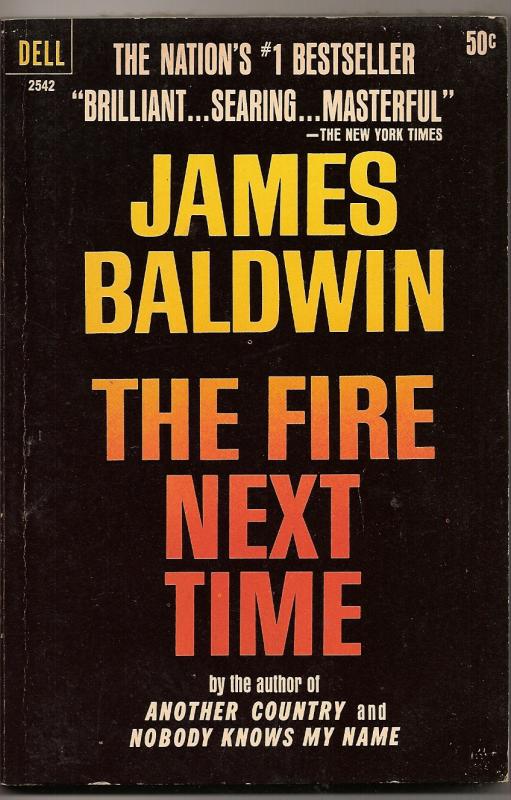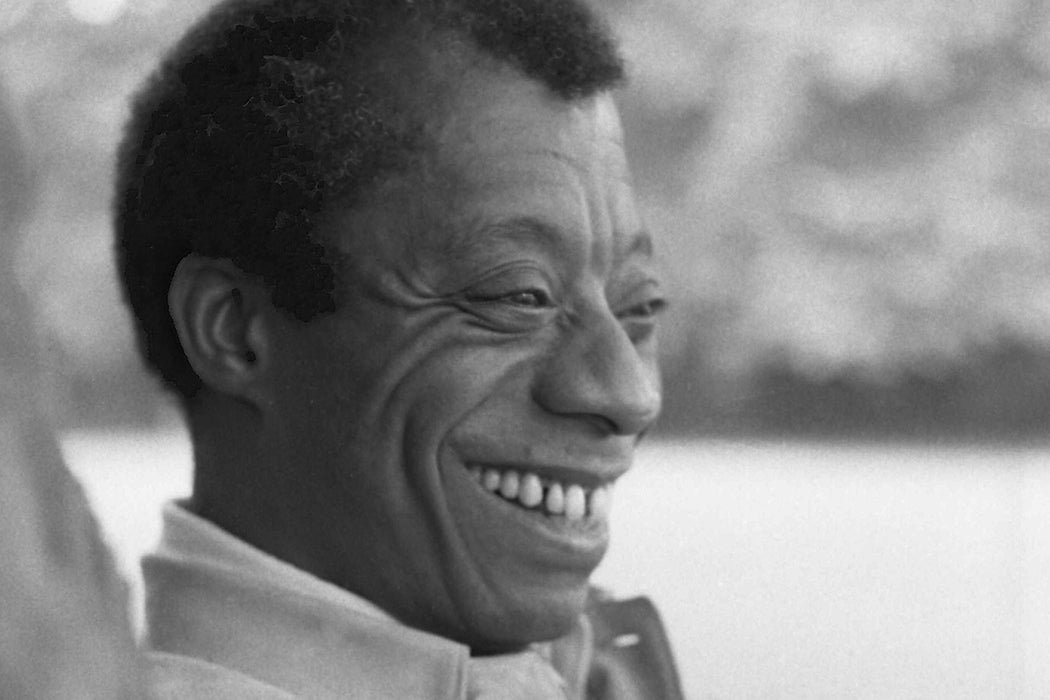“Do I really want to be integrated into a burning house?”
This is the question, canonized in the pages of The Fire Next Time, that James Baldwin arrived at in 1962; those involved in Black liberation today have come to a similar crossroads. In the tumultuous three years since George Zimmerman was acquitted of fatally shooting Trayvon Martin, in 2013, Black Lives Matter has grown into a dynamic political movement, galvanized by online communities and on-the-ground protests.
Though #BlackLivesMatter is but one part of the history of Black collectivized action, it’s a useful entry point. In a new documentary short, How a Hashtag Defined a Movement, BLM co-founder Alicia Garza talks to director Sabrina Schmidt about how, in the aftermath of Zimmerman’s acquittal, she wrote “a love letter to Black people” on Facebook, which concluded with the seminal line: “Black lives matter.” Patrisse Cullors, another co-founder, took the initiative of putting a hashtag in front of the phrase and sharing it. It was quickly adopted by many others voicing their grievances online. Shortly thereafter, with the assistance of the third co-founder Opal Tometi, the hashtag and its influence grew exponentially, creating a wide network of activists.
After various demonstrations across the United States, the cause has gained momentum and international attention. Between the 2014-15 protests in Ferguson, Missouri, against the shooting of Michael Brown, and the acquittal of his killer, Darren Wilson, and protests this held this year in Dallas, Texas, against the killings of Alton Sterling and Philando Castile, Black Lives Matter and its affiliates have attracted substantial controversy and even anger. Critics fault BLM for reintroducing the problem of race and its significance in a supposedly “post-racial society.”
“Michael Brown was dead before he was dead,” lamented George Lipsitz, a Professor in the Department of Black Studies at UCSB, during a Harvard discussion panel entitled “Generations of Struggle.” Tef Poe, co-founder of Hands up United, a Ferguson social-justice organization, said that, as he saw it, “What exactly happened was the U.S. government declared war on a black community. You can’t vote that out of here… you can’t philosophize that out of here. All the degrees in the world don’t mean shit when there’s a tank five minutes from your mama’s house.”
The Movement for Black Lives presents a platform of specific demands regarding economic justice, political power, and the prison-industrial complex. Campaign Zero offers a detailed overview of the problems and proposed solutions to police violence in the United States. “We can live in a world where the police don’t kill people by limiting police interventions, improving community interactions, and ensuring accountability,” their website states.
Often, however, the Black Lives Matter movement is interpreted cynically, with emphasis placed on its eruptive quality, rather than seeing the outbursts as a consequence of its calmer voices going unheard. In one respect, this is a crucial difference between Black Lives Matter and protest movements of the past. Patrisse Cullors, in the aforementioned documentary, expresses how
[T]he old civil rights really upheld the narrative around ‘respectability,’ around what we’re supposed to look like and be like. Folks in Ferguson said, “No, we’re not your respectable Negro, we are going to sag our pants, are going to be ratchet, and we’re okay with that.” We believe that have to show up in our full-selves, without closeting parts of ourselves, marginalizing parts of ourselves, and build together.
By preemptively delimiting certain forms of political behavior as not “respectable,” we risk continuing to inhabit only the old ways of thinking about how society should, or could, be organized. Whether the question is what needs to change or who can ask for it in the first place, openness to radical forms of expression is essential to reaching radical goals.
Baldwin foresaw the difficulty of this dilemma, whereby just asking nicely through the prescribed channels of reform was, at the best of times, hopeful. “Now, there is simply no possibility of a real change in the Negro’s situation without the most radical and far-reaching changes in the American political and social structure,” he writes in The Fire Next Time. American society itself—its fundamental assumptions and underlying logic—needs scrutiny. Despite these sentiments, The Fire Next Time rarely finds its way into discussions of a truly progressive stance on Black liberation. Unwilling as he was at that time to stand firmly by anything besides a vague commitment to a collection of “the relatively conscious whites and the relatively conscious blacks,” who together would “change the history of the world,” early Baldwin is rarely looked to as a model of “far-reaching” political thinking.

It is in this respect, however, that Bill Lyne’s article on Baldwin’s “Black Radicalism” can help us understand how the The Fire Next Time and, respectively, the Black Lives Matter movement are misread (so to speak). Lyne’s article narrates the history of Baldwin’s writing in conjunction with the development of his politics, that is, from being “the darling of the white liberal establishment” to developing a politics that “pushed him beyond the boundaries of canonization.” Written during the middle period of his career, The Fire Next Time bridges these categories. Although it doesn’t reflect the “Black Marxism” Lyne finds in Baldwin’s later works, it isn’t interested in liberal integrationism either.
Simply integrating oneself into white society was, in his mind, neither a sufficient nor sustainable goal. He thought that what produced and enabled structures of state-sanctioned violence was a fundamental misunderstanding of where ‘value,’ in both a sublime and material sense, existed and was to be sought. The following passage, from the second of the two letters that make up the book, illustrates this view:
White Americans find it as difficult as white people elsewhere do to divest themselves of the notion that they are in possession of some intrinsic value that black people need, or want. And this assumption—which, for example, makes the solution to the Negro problem depend on the speed with which Negroes accept and adopt white standards—is revealed in all kinds of striking ways, from Bobby Kennedy’s assurance that a Negro can become President in forty years to the unfortunate tone of warm congratulation with which so many liberals address their Negro equals. It is the Negro, of course, who is presumed to have become equal—an achievement that not only proves the comforting fact that perseverance has no color but also overwhelmingly corroborates the white man’s sense of his own value.
To adopt white standards was to reintroduce yourself to the equation that misplaced value in a person’s skin color, and into the kind of society that such a mathematics produces. Neither did Baldwin feel that there was “reason to suppose that white people are better equipped to frame the laws by which I am to be governed than I am.” Nor was there reason to deny that “white people cannot, in the generality, be taken as models of how to live.” Ending white supremacy couldn’t mean simply re-aligning the color lines, making certain Black subjects whiter. The irony of today’s police violence would not have been lost on Baldwin: namely, that all this takes place under the watch of a Black President, whose first term began a little more than forty years later.
In a 1970 interview with Nabile Farès—by which point Baldwin had embraced his more radical side—we encounter these ideas in more concrete terms. In response to the question “What is the definition of a black man, and his power?” Baldwin says, “I am a black man, if you will—I was darkened long ago by the sun; but that’s not what makes me ‘black.’ It’s the role I play in the world.”
This “role,” this positioning, which has always been the real object of change, is what Baldwin talks about when he refuses the idea that Black subjects should be, or need to be, accepted by White subjects. “There appears to be a vast amount of confusion on this point,” he writes in The Fire Next Time, “but I do not know many Negroes who are eager to be ‘accepted’ by white people, still less to be loved by them; they, the blacks, simply don’t wish to be beaten over the head by the whites every instant of our brief passage on this planet.” Awakening from their “fantasy,” Baldwin foresaw how “white people in this country will have quite enough to do in learning how to accept and love themselves and each other, and when they have achieved this—which will not be tomorrow and may very well be never—the Negro problem will no longer exist, for it will no longer be needed.” The “Negro problem” of today would be addressed by targeting the laws and practices of state-sanctioned violence, not by being accepted to join the executors.
Hence the question: “Do I really want to be integrated into a burning house?” Does it make sense to try to formulate the solution to a problem in the terms of the society that produced it?
Jacques Rancière, the contemporary French philosopher, formulates the problem of politics as the contest between two different ways of “counting the parts of the community.” The first way, he explains, “counts real parts only—actual groups defined by differences in birth, and by different functions, places and interests that make up the social body to the exclusion of every supplement.” The second, in addition to these “actual groups,” counts the “supplement”—those who fall outside the community, who do not abide by, and are not counted in, the “consensus.” Rancière calls the first way of counting the social body “the police” and the second “politics.” Politics dissents from the consensus as it counts “the part of those who have no part.”
Black Lives Matter is strongest when it counts like this. That is, when it dissents from the consensus of “the police,” disrupting our false notion of the inclusive social whole. This is how the movement can bring attention to the ways in which people have been violently excluded, to how this violence is intrinsic to society as we know it, built in to its processes and operations.
When Patrisse Cullors disavows the myth of the “respectable Negro”—of the ‘proper’ way to protest—we might be well served to think on Baldwin; the fallacies of abidance and integration are precisely what The Fire Next Time decries. And in this respect, we might also acknowledge that The Movement for Black Lives and Campaign Zero are exactly the kinds of proposals for “far-reaching changes in the American political and social structure” that Baldwin envisioned instead. In other words, it would seem strange to champion the book but forget what it called for.
Yet many are unwilling to connect the dots. However, perhaps the failure to do so results from a more fundamental inability to recognize what Baldwin was able to, which is that “renewal becomes impossible if one supposes things to be constant that are not.” You can’t expect to arrive at a radical form of democracy, as it were, by walking down a road that history has proven to be a cul-de-sac.







